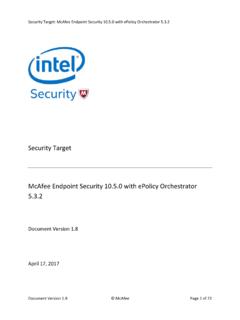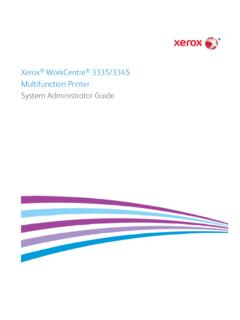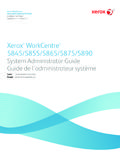Transcription of THE RACE BETWEEN MACHINE AND MAN: NATIONAL …
1 NBER WORKING PAPER SERIES. THE RACE BETWEEN MACHINE AND MAN: IMPLICATIONS OF TECHNOLOGY FOR GROWTH, FACTOR SHARES AND EMPLOYMENT. Daron Acemoglu Pascual Restrepo Working Paper 22252. NATIONAL BUREAU OF ECONOMIC RESEARCH. 1050 Massachusetts Avenue Cambridge, MA 02138. May 2016, Revised June 2017. We thank Philippe Aghion, Mark Aguiar, David Autor, Erik Brynjolfsson, Chad Jones, John Van Reenen, and participants at various conferences and seminars for useful comments and suggestions. We gratefully acknowledge financial support from the Bradley Foundation and the Toulouse Network on Information Technology. Restrepo thanks the Cowles Foundation and the Yale Economics Department for their hospitality. The views expressed herein are those of the authors and do not necessarily reflect the views of the NATIONAL Bureau of Economic Research.
2 NBER working papers are circulated for discussion and comment purposes. They have not been peer-reviewed or been subject to the review by the NBER Board of Directors that accompanies official NBER publications. 2016 by Daron Acemoglu and Pascual Restrepo. All rights reserved. Short sections of text, not to exceed two paragraphs, may be quoted without explicit permission provided that full credit, including notice, is given to the source. The Race BETWEEN MACHINE and Man: Implications of Technology for Growth, Factor Shares and Employment Daron Acemoglu and Pascual Restrepo NBER Working Paper No. 22252. May 2016, Revised June 2017. JEL No. J23,J24,O14,O31,O33. ABSTRACT. We examine the concerns that new technologies will render labor redundant in a framework in which tasks previously performed by labor can be automated and new versions of existing tasks, in which labor has a comparative advantage, can be created.
3 In a static version where capital is fixed and technology is exogenous, automation reduces employment and the labor share, and may even reduce wages, while the creation of new tasks has the opposite effects. Our full model endogenizes capital accumulation and the direction of research towards automation and the creation of new tasks. If the long-run rental rate of capital relative to the wage is sufficiently low, the long-run equilibrium involves automation of all tasks. Otherwise, there exists a stable balanced growth path in which the two types of innovations go hand-in-hand. Stability is a consequence of the fact that automation reduces the cost of producing using labor, and thus discourages further automation and encourages the creation of new tasks. In an extension with heterogeneous skills, we show that inequality increases during transitions driven both by faster automation and introduction of new tasks, and characterize the conditions under which inequality is increasing or stable in the long run.
4 Daron Acemoglu Department of Economics, E52-446. MIT. 77 Massachusetts Avenue Cambridge, MA 02139. and CIFAR. and also NBER. Pascual Restrepo Department of Economics Boston University 270 Bay State Rd Boston, MA 02215. and Cowles Foundation, Yale 1 introduction The accelerated automation of tasks performed by labor raises concerns that new technologies will make labor redundant ( , Brynjolfsson and mcafee , 2012, Akst, 2014, Autor, 2015). The recent declines in the labor share in NATIONAL income and the employment to population ratio in the ( , Karabarbounis and Neiman, 2014, and Oberfield and Raval, 2014) are often interpreted as supporting evidence for the claims that, as digital technologies, robotics and artificial intelligence penetrate the economy, workers will find it increasingly difficult to compete against machines, and their compensation will experience a relative or even absolute decline.
5 Yet, we lack a comprehensive framework incorporating such effects, as well as potential countervailing forces. The need for such a framework stems not only from the importance of understanding how and when automation will transform the labor market, but also from the fact that similar claims have been made, but have not always come true, about previous waves of new technologies. Keynes famously foresaw the steady increase in per capita income during the 20th century from the in- troduction of new technologies, but incorrectly predicted that this would create widespread tech- nological unemployment as machines replaced human labor (Keynes, 1930). In 1965, economic historian Robert Heilbroner confidently stated that as machines continue to invade society, du- plicating greater and greater numbers of social tasks, it is human labor itself at least, as we now think of labor' that is gradually rendered redundant (quoted in Akst, 2014).
6 Wassily Leontief was equally pessimistic about the implications of new machines. By drawing an analogy with the technologies of the early 20th century that made horses redundant, in an interview he speculated that Labor will become less and less important.. More and more workers will be replaced by machines. I do not see that new industries can employ everybody who wants a job (The New York Times, 1983). This paper is a first step in developing a conceptual framework to study how machines re- place human labor and why this might (or might not) lead to lower employment and stagnant wages. Our main conceptual innovation is to propose a unified framework in which tasks previ- ously performed by labor are automated, while at the same time other new technologies complement labor specifically, in our model this takes the form of the introduction of new tasks in which labor has a comparative advantage.
7 Herein lies our answer to Leontief's analogy: the difference BETWEEN human labor and horses is that humans have a comparative advantage in new and more complex tasks. Horses did not. If this comparative advantage is sufficiently important and the creation of new tasks continues, employment and the labor share can remain stable in the long run even in the face of rapid automation. The importance of these new tasks is well illustrated by the technological and organizational changes during the Second Industrial Revolution, which not only involved the replacement of the stagecoach by the railroad, sailboats by steamboats, and of manual dock workers by cranes, but also the creation of new labor-intensive tasks. These tasks generated jobs for a new class of engineers, machinists, repairmen, conductors, back-office workers and managers involved with the introduction 1.
8 And operation of new technologies ( , Landes, 1969, Chandler, 1977, and Mokyr, 1990). Today, while industrial robots, digital technologies and computer-controlled machines replace la- bor, we are again witnessing the emergence of new tasks ranging from engineering and programming functions to those performed by audio-visual specialists, executive assistants, data administrators and analysts, meeting planners and computer support specialists. Indeed, during the last 30 years, new tasks and new job titles account for a large fraction of employment growth. To document this fact, we use data from Lin (2011) to measure the share of new job titles in which workers per- form newer tasks than those employed in more traditional jobs within each occupation. In 2000, about 70% of computer software developers (an occupation employing one million people at the time) held new job titles.
9 Similarly, in 1990 radiology technician and in 1980 management analyst were new job titles. Figure 1 shows that for each decade since 1980, employment growth has been greater in occupations with more new job titles. The regression line indicates that occupations with 10 percentage points more new job titles at the beginning of each decade grow faster over the next 10 years (standard error= ). From 1980 to 2007, total employment in the grew by About half ( ) of this growth is explained by the additional employment growth in occupations with new job titles relative to a benchmark category with no new job 50 100 150 200. Percent change in employment growth by decade -200 -150 -100 -50 0. 0 20 40 60 80. Share of new job titles at the beginning of each decade From 1980 to 1990 From 1990 to 2000 From 2000 to 2007.
10 Figure 1: Employment growth by decade plotted against the share of new job titles at the beginning of each decade for 330 occupations. Data from 1980 to 1990 (in dark blue), 1990 to 2000 (in blue) and 2000 to 2007 (in light blue, re-scaled to a 10-year change). Data source: See Appendix B. We start with a static model in which capital is fixed and technology is exogenous. There are two types of technological changes: the automation of existing tasks and the introduction of new tasks in which labor has a comparative advantage. Our static model provides a rich but tractable framework to study how automation and the creation of new tasks impact factor prices, factor 1. The data for 1980, 1990 and 2000 are from the Census. The data for 2007 are from the American Community Survey. Additional information on the data and our sample is provided in Appendix B, where we also document in detail the robustness of the relationship depicted in Figure 1.















